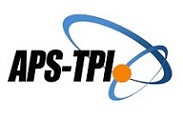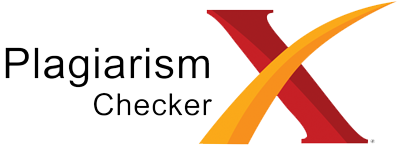Penguatan Kemampuan Siswa Berpikir Kreatif Melalui Model Pembelajaran Snowball Throwing Dengan Motivasi Belajar
Abstract
This study aims to determine the effect of the Snowball Throwing learning model on students' ability to think creatively. This study used a quasy experimental design with a sample random sampling model. The subject of this research was grade 8 MTs Raudlatul Ulum Karangploso. The instrument used in determining the enthusiasm for learning was a questionnaire, while to determine the students' ability to think creatively, students used an essay test. For the results of the study, the value of the experimental class is greater than the control class in all assessments, including the two-way ANOVA results also have Fcount greater than Ftable. Show that the Snowball Throwing learning model and enthusiasm affect the students' ability to think creatively.
Abstrak
Penelitian bertujuan untuk mengetahui pengaruh model pembelajaran Snowball Throwing terhadap kemampuan pebelajar berpikir kreatif pebelajar. Penelitian menggunakan quasy experimental design dengan model sample random sampling. Subjek penelitian ini adalah kelas 8 MTs Raudlatul Ulum Karangploso. Instrumen yang dipakai dalam mengetahui semangat belajar adalah angket sedangkan untuk mengetahui kemampuan pebelajar berpikir kreatif pebelajar memakai tes essay. Untuk hasil penelitian lebih besar nilai dari kelas eksperimen daripada kelas kontrol di segala penilaian, termasuk pada hasil ANAVA dua arah juga memiliki Fhitung yang lebih besar daripada Ftabel. Menunjukkan bahwa model pembelajaran Snowball Throwing dan semangat mempengaruhi kemampuan pebelajar berpikir kreatif pebelajar.
Keywords
Full Text:
PDFReferences
Adhiatmika, M., Agustini, K., & ... (2017). Pengaruh Model Pembelajaran Kooperatif Tipe Snowball Throwing Terhadap Hasil Belajar Pebelajar Pada Mata Pelajaran TIK Kelas VIII SMP Negeri 5 Tejakula. KARMAPATI, Vol. 6, No. 1
Alfira, N. (2019). Hubungan model pembelajaran snowball throwing terhadap hasil belajar matematika pebelajar. Journal of science and social …, Vol. 2, No. 1
Alwi, E., & Hamimah, H. (2018). Peningkatan Hasil Belajar Pebelajar Dalam Pembelajaran Ips Dengan Model Snowball Throwing. E-Journal Pembelajaran Inovasi, Jurnal …, Vol. 6, No. 2
Amabile, T. M. (1996). Creativity and innovation in organizations.
Amabile, T. M. (1998). How to kill creativity (Vol. 87). Harvard Business School Publishing Boston, MA.
Amabile, T. M. (2012). Componential theory of creativity. Harvard Business School, 12(96), 1–10.
Amrein, A. L., & Berliner, D. (2003). Student motivation and learning. NJ USA: HW Wilson Co.
Boden, M. A. (2001). Creativity and knowledge. Creativity in Education, 95–102.
Dewi, I., Poedjiastoeti, S., & ... (2017). Elsii learning model based local wisdom to improve students’ problem solving skills and scientific communication. International Journal of …, Vol. 5 No. 1
Emda, A. (2018). Kedudukan semangat belajar pebelajar dalam pembelajaran. Lantanida Journal, 5(2), 172–182.
Fauziah. Nur. H. (2019). Pengaruh Penggunaan Model Pembelajaran Snowball Throwing Terhadap Kemampuan pebelajar berpikir kreatif Pebelajar Kelas III MIN 7 Tulungagung. IAIN Tulungagung, Tuluagung, Indonesia
Ginting, M. (2017). Snowball Throwing Learning Model Implementation in order to Increase Student Civic Education Learning Outcomes. Researchers World, Query, Vol. 8, Iss. 3,120-125
Hamalik, O. (2007). Dasar-dasar pengembangan kurikulum. Bandung: PT. Remaja Rosdakarya.
Jovanovich, H. B. (1976). GRAHAM WALLAS Stages in the Creative Process. The Creativity Question, 69.
Khairani, E., Ristiono, R., Helendra, H., & ... (2019). … Effect of the application of the Cooperative Learning Model Type Snowball Throwing Against an increase in the activity of learning to the learners on subjects Science …. Atrium Pendidikan …, Vol. 4, No. 1
Kim, M. C., & Hannafin, M. J. (2011). Scaffolding problem solving in technology-enhanced learning environments (TELEs): Bridging research and theory with practice. Computers & Education, 56(2), 403–417.
Lau, J. Y. (2011). An introduction to critical thinking and creativity: Think more, think better. John Wiley & Sons.
Leikin, R., & Pitta-Pantazi, D. (2013). Creativity and mathematics education: The state of the art. ZDM, 45(2), 159–166.
Lumsden, L. S. (1994). Student Motivation. Research Roundup, 10(3), n3.
Mairing, J. P. (2017). Thinking Process of Naive Problem Solvers to Solve Mathematical Problems. International Education Studies, 10(1), 1–11.
Parnawi, A. (2019). Psikologi Belajar. Deepublish.
Piirto, J. (2011). Creativity for 21st century skills. In Creativity for 21st Century Skills (pp. 1–12). Springer.
Praherdhiono, H., Abidin, Z., Adi, E. P., Prihatmoko, Y., & Soepriyanto, Y. (2018). Learning Design for Strengthening of Learner Self-Concept. International Conference on Education and Technology (ICET 2018).
Rachmawati, R. (2018). Analisis Keterkaitan Standar Kompetensi Lulusan (SKL), Kompetensi Inti (KI), dan Kompetensi Dasar (KD) dalam Implementasi Kurikulum 2013. Tatar Pasundan: Jurnal Diklat Keagamaan, 12(34), 231–239.
Rifa’i, A., & Anni, C. T. (2009). Psikologi pendidikan. Semarang: Unnes.
Sandi, I. K., Suwatra, I. I. W., & Widiana, I. W. (2014). Pengaruh Model Pembelajaran Snowball throwing Terhadap Hasil Belajar IPA Dengan Kovariabel Kemampuan pebelajar berpikir kreatif Pebelajar Kelas IV SD. Mimbar PGSD Undiksha, 2(1).
Sanjaya, W. (2008). Kurikulum Dan Pembelajaran (Teori & Praktek KTSP). Kencana.
Sardiman, A. M. (2004). Interaksi & semangat belajar mengajar. Rajagrafindo persada (rajawali pers).
Shoimin, A. (68). Model pembelajaran inovatif dalam kurikulum 2013. Yogyakarta: Ar-Ruzz Media, 210.
Sternberg, R. J., & Williams, W. M. (1996). How to develop student creativity. ASCD.
Sulton, E. P. A., & Susilo, H. (2018). Curriculum Model of Capability Development through Transdisciplinary Courses System.
Tina. WO. (2020). Pengaruh Semangat Belajar Pebelajar Terhadap Berpikir Kreatif Pada Materi Aplikasi Operasi Himpunan Kelas VII SMP Muhammadiyah Ambon, Ambon, Indonesia.
Wallas, G. (1926). The art of thought.
Yang, E.-H., & He, D.-K. (2010). Interactive encoding and decoding for one way learning: Near lossless recovery with side information at the decoder. IEEE Transactions on Information Theory, 56(4), 1808–1824.
Yerushalmy, M. (2009). Educational technology and curricular design: Promoting mathematical creativity for all students. In Creativity in mathematics and the education of gifted students (pp. 101–113). Brill Sense.
DOI: http://dx.doi.org/10.17977/um038v4i32021p280
Refbacks
- There are currently no refbacks.
Copyright (c) 2021 Intan Ratnasari, Zainul Abidin, Henry Praherdhiono

This work is licensed under a Creative Commons Attribution-ShareAlike 4.0 International License.
JKTP: Jurnal Kajian Teknologi Pendidikan published by Department of Educational Technology, Faculty of Education, State University of Malang in Collaboration with Asosiasi Program Studi Teknologi Pendidikan Indonesia (APS TPI).
Publisher Address:
Lab. Teknologi Pendidikan, Gd.E2, Lt.1
Fakultas Ilmu Pendidikan Universitas Negeri Malang
Jl. Semarang 5, Kota Malang Email: jktp.fip@um.ac.id
========================================================================================================
| INDEXED BY | TOOLS | PLAGIARISM CHECK | ARTICLE TEMPLATE |
|
|

JKTP: Jurnal Kajian Teknologi Pendidikan is licensed under a Creative Commons Attribution-ShareAlike 4.0 International License.
JKTP Statistics (Since July 13th, 2020)





.png)












